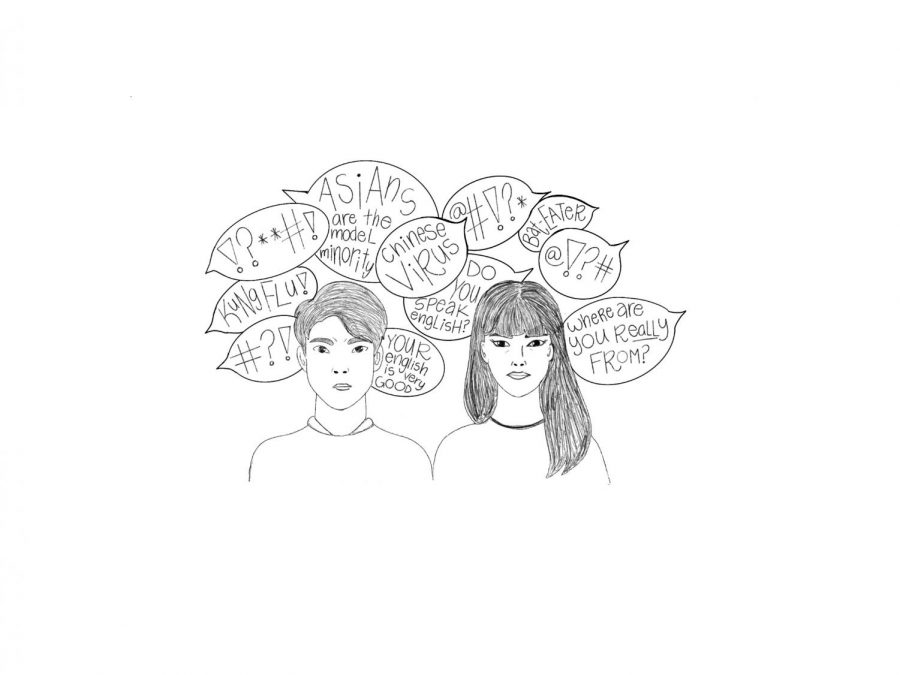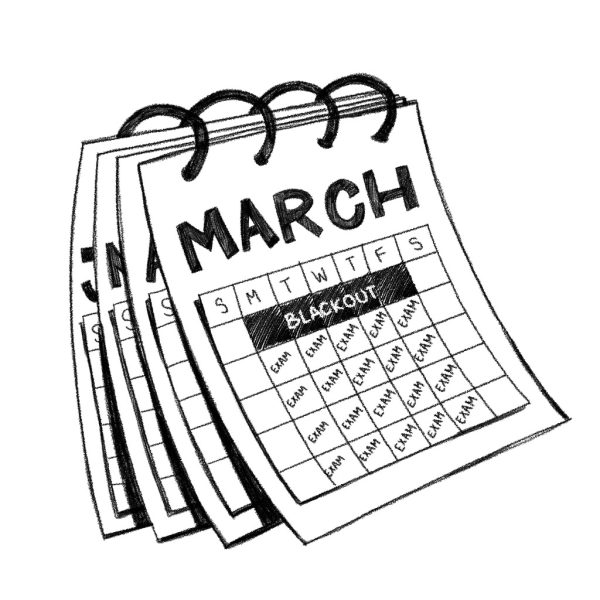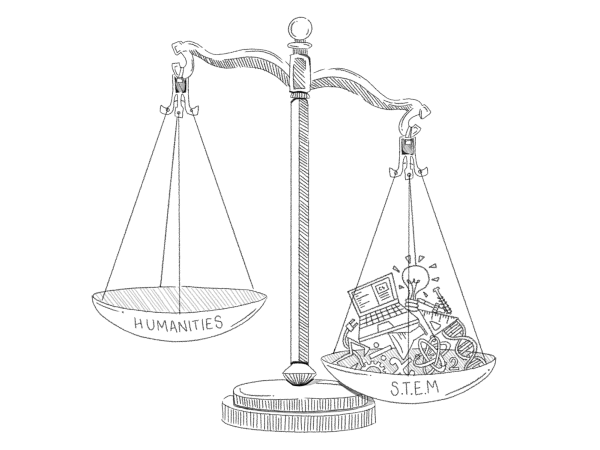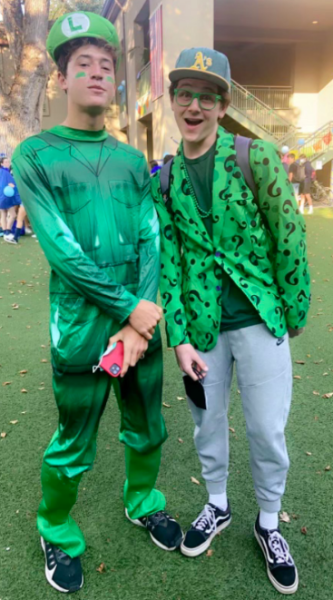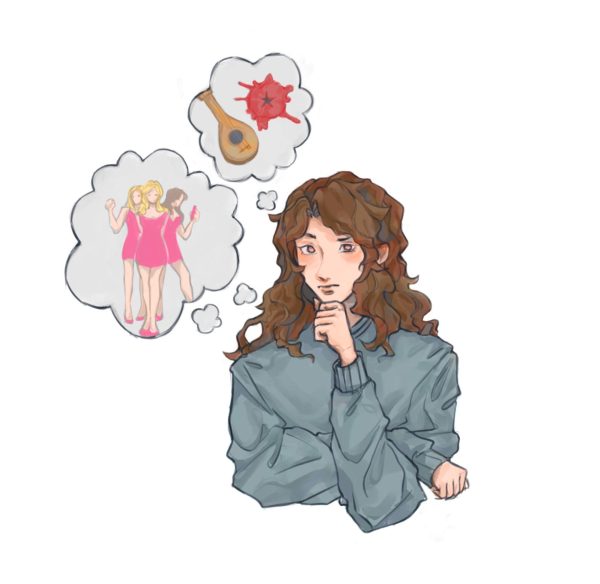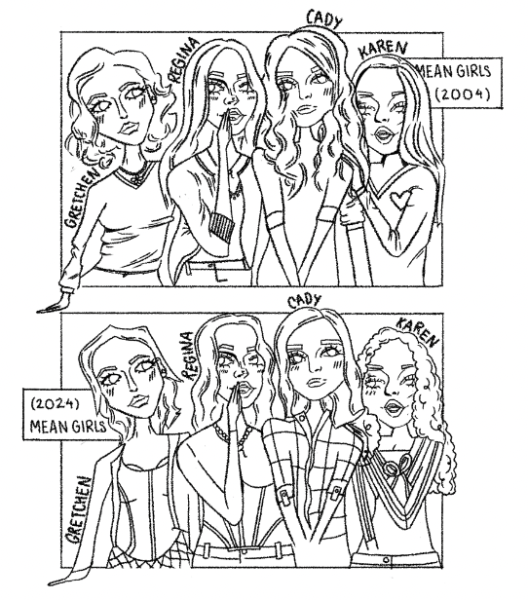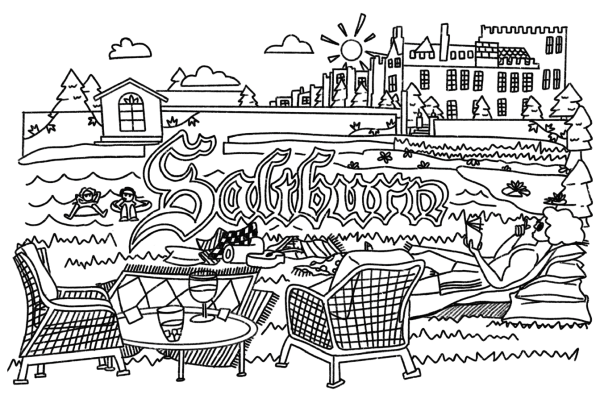Top Picks From Print: Let’s Put an End to Asian American Discrimination
Anti-Asian hate crimes have increased by 150% over the past year, according to California State University’s Center for the Study of Hate and Extremism. Staff illustration: Sophie Fang.
March 26, 2021
Headlines about hate crimes against Asian Americans are common in recent months. From the BBC: “COVID ‘Hate Crimes’ Against Asian Americans On Rise;” and “As Attacks Against Asian Americans Spike, Advocates Call for Action to Protect Communities;” from CNN, and “Asian Seniors Assaulted in Unprovoked Subway Attacks” from ABC News. Anti-Asian hate crimes have increased by 150% over the past year, according to California State University’s Center for the Study of Hate and Extremism. In January, an 84-year-old man from Thailand was attacked and killed on the street in San Francisco, and in February, a 61-year-old Filipino man was slashed in the face with a box cutter in New York. On March 16, eight people, six of whom were Asian women, were killed in a series of mass shootings in Atlanta, GA.
Hate crimes and anti-Asian sentiment are nothing new: Americans have always struggled with severe cognitive dissonance when it comes to Asian American stereotypes. Americans simultaneously applaud their “model minority” doctors and scientists while disparaging dirty, poor immigrants in Chinatown. COVID-19, with the help of prominent politicians, has flipped the switch toward the latter, blaming all Asian Americans for causing the pandemic.
Junior Bella Ting is part of the social media team at LAAUNCH (Leading Asian Americans to Unite for Change), the organization her dad, David Ting, started with friends to combat anti-Asian sentiment in the U.S. and increase Asian American representation in areas such as politics, corporations and media. “Trump’s rhetoric during his presidency — the whole ‘Kung Flu’ and China virus thing — that kind of language is super harmful and normalizes anti-Asian sentiment,” Bella Ting said. She believes that this language encourages similar ideologies and behavior across the U.S. “People think if their president says that, then they can say the same thing, so his words definitely made a big impact on people’s actions,” she said. She also believes that Trump’s rhetoric contributes to the harmful generalization of Asian Americans. “Some people associate every Asian person with China. Because the pandemic started there, people are using Asian Americans as a scapegoat,” Bella Ting said.
The distinction she makes is an important one. While Americans have always viewed Asians as some kind of mono-race, politicians such as Trump perpetuate this harmful generalization and reinforce previously-held beliefs about Asians to shift the blame for COVID-19 off of themselves. Trump is not the only politician who has enforced harmful stereotypes against Asians. Last October, Rudy Giuliani was caught on a hot mic repeatedly bowing while mocking a Chinese accent. The reinforcement of anti-Asian sentiment for political gain is shameful and those who perpetuate it must be held accountable. So, what else can be done?
When David Ting and his friends started LAAUNCH, they shared a common background and vision. “We were born and grew up in the U.S. and were alarmed about the record number of hate crimes directed against Asian Americans, especially during the pandemic. In addition, Asian Americans are the fastest growing racial group in the states, but we are still underrepresented in government, corporate leadership roles, media and culture,” David Ting said.
“LAAUNCH was started because we wanted to get Asian Americans to show up and vote in the November elections,” Bella Ting said. “LAAUNCH helped put together a digital media campaign that featured prominent Asian American figures, such as actor Hudson Yang from ‘Fresh Off the Boat’ and NBA star Jeremy Lin, to encourage Asian Americans to get out and vote in key swing states. The campaign worked as a record number of Asian Americans ended up voting!” LAAUNCH has now turned to other ways of helping the Asian American community. “Now we are working on the STAATUS Index (Social Tracking of Asian Americans throughout the U.S.), which will help people better understand the underlying causes of prejudice, discrimination and racism towards Asian Americans,” Bella Ting said. “These stereotypes have existed for decades and create barriers in the community.”
Organizations like LAAUNCH are key to pushing back against the racist ideology thrust on us by politicians. They represent action among the American people towards tangible change, not just the performative social activism that we tap through daily on our Instagram feeds. “As part of our resource program, we recently posted a guide on how to combat anti-Asian racism,” David Ting said. “I think it’s great that people are finally starting to stand up for Asian Americans on social media. Companies such as Apple, ESPN, Nike and others sent out statements in support of the Asian American community and condemning racism.”
Bella Ting works on LAAUNCH’s Instagram platform. “We live in a technology-based world, and the quickest way to spread our message is through social media,” Bella Ting said. She has craftily consolidated her artistic talents with her passion for Asian American issues. “Something that I kept in mind was to keep everything visually appealing as well as informative,” Bella Ting said. In addition to heavier content about combating anti-Asian sentiments, Bella Ting also works on some more light-hearted posts. “There aren’t that many Asian role models to look up to in the media, so we’re doing spotlights once a month to highlight Asian American public figures,” Bella Ting said. “We also have more fun content so people can learn about and interact with our culture, like our post about Chinese new year.”
Social media is a powerful tool for social activism, if used correctly. Students should steer clear of clichéd posts meant simply to conform amongst peers. They should focus on what they can really do to help by finding information that others have not seen before. Posts that share meaningful messages about combating anti-Asian sentiments or that aim to educate Americans about Asian cultures are some of the easiest ways that students can help the Asian American cause.
The Asian American movement is not an uncontroversial one. Historically, Asian Americans and non-Asian people of color have been pitted against one another, usually by white Americans who point to Asians as a model minority that other people of color cannot or will not emulate. Instead of giving in to these racial tensions, all of us as people of color should band together to create lasting movements that invoke positive change for all of us. I think LAAUNCH sets a great example. “Sometimes people have said, ‘you should focus on BLM’ or ‘what you’re doing is taking away from what’s happening with their movement,’” Bella Ting said. “We want to make sure that we have things like our ‘Asians for Black Lives’ post on our feed because if the [people of color] in America are fighting against each other, we’re not going to get anywhere. If anything, [people of color] who share similar experiences should work together to combat racism and discrimination.”


